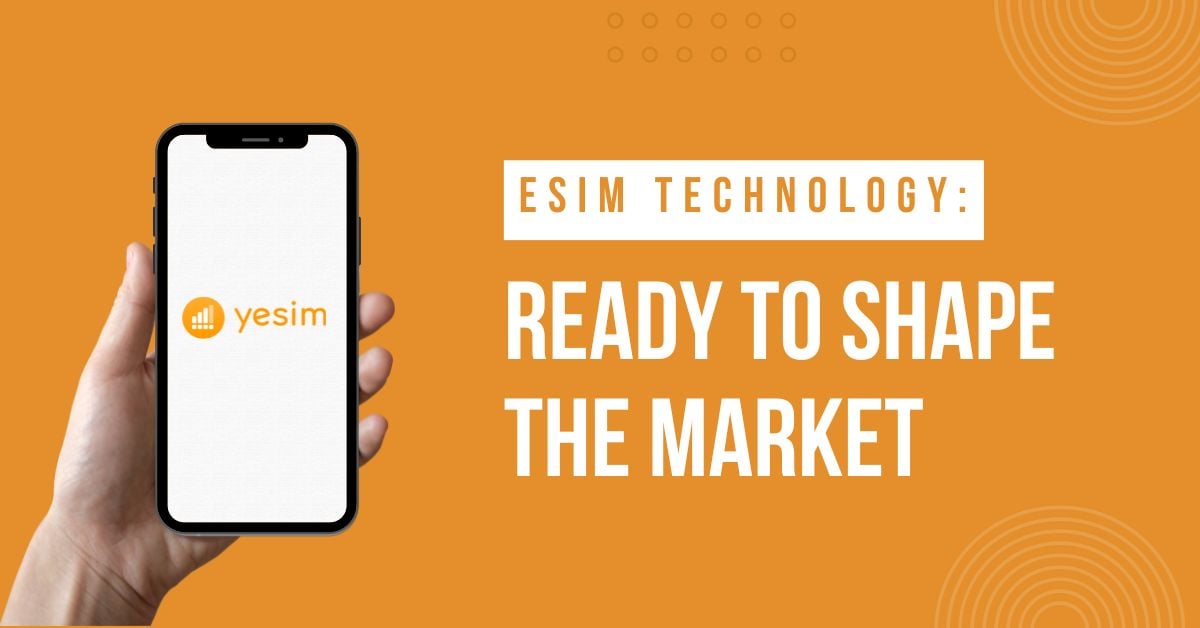
We live in an ever-changing world and that is the nature of things. Being children, we could not even imagine that in 20 years we would be holding a smartphone that would offer us everything from a “bank” to a “movie theatre”. In addition, we are already surrounded by smart homes and cities, augmented and virtual reality. Every innovative technology means an expansion of boundaries and opportunities.
SIM evolution
Let’s take a SIM card as an example. The first full-size SIM card was introduced in 1991, and as it evolved there were mini, micro, and nano SIMs, and finally an eSIM card, the “embedded” counterpart that a user can digitally activate by logging into an app or scanning a QR code. The main advantage of the eSIM is the ability to quickly and easily switch providers, choose the best quality of services and optimize costs. eSIMs have the potential to eliminate roaming charges abroad. Users can also gain space for new features or additional battery life, and could reduce the risk of device theft. The digital chips allow network operators or device manufacturers to quickly release software updates when security exposures are discovered.
Why eSIM demand is growing
Any innovative technology is a matter of rationality from the consumer’s point of view: why ignore a technology that makes life easier on the one hand and safer on the other? It’s a natural evolution. It will improve the experience in the future. Moreover, the younger generation of users is open to anything new, they are not conservative by default, they are willing to accept new gimmicks from developers, test them based on their own experience and actively use them if the product or service solves the problem effectively. So, the future of eSIM technology is definitely promising. The numbers speak volumes: the size of the global eSIM market was estimated at USD 7.3 billion in 2021 and is expected to reach USD 17.5 billion by 2030 (source: Straits Research).
Max Pankratov, Founder & COO of Yesim, the global mobile internet application based on eSIM technology, comments on the large-scale trend in the gadget market: “Manufacturers stop producing smartphones with a regular SIM card. An example of this is the iPhone 14, which has so far only been introduced to American consumers. The market is systematically introducing eSIM technology into people’s lives through gadgets. The SIM card as a technology is becoming obsolete and is gradually being replaced by a more advanced solution. This is a natural process that will certainly take time. Once consumers and providers realize the benefits, mass adoption of eSIMs will be unescapable.”
Awareness is the key
You may already have an eSIM-compatible phone and not even know it. Google’s smartphones have been eSIM-enabled since the 2017 Pixel 2, and Apple added it to iPhones starting with the 2018 iPhone XS. The introduction of any new technology is also an information and education campaign. People simply do not know what benefits they have right at their fingertips. Most of the latest smartphones support eSIM technology, and their list is updated regularly.
SIM cards have successfully connected the world for many years. However, their sustainable impact has remained static. Every time users replace SIM cards due to a change of mobile operator, lost or damaged SIM cards, plastic waste increases. eSIMs have the ability to change the SIM technology landscape and have a positive impact on climate change. eSIM users not only save themselves time, stress and hassle, but also do good for the environment with benefits such as: less CO2, no logistical footprint and packaging, digital sales, leaner device. Another compelling reason for the future success of eSIM technology.
You may be interested in: How Can Someone Get Private Information from My Phone?

